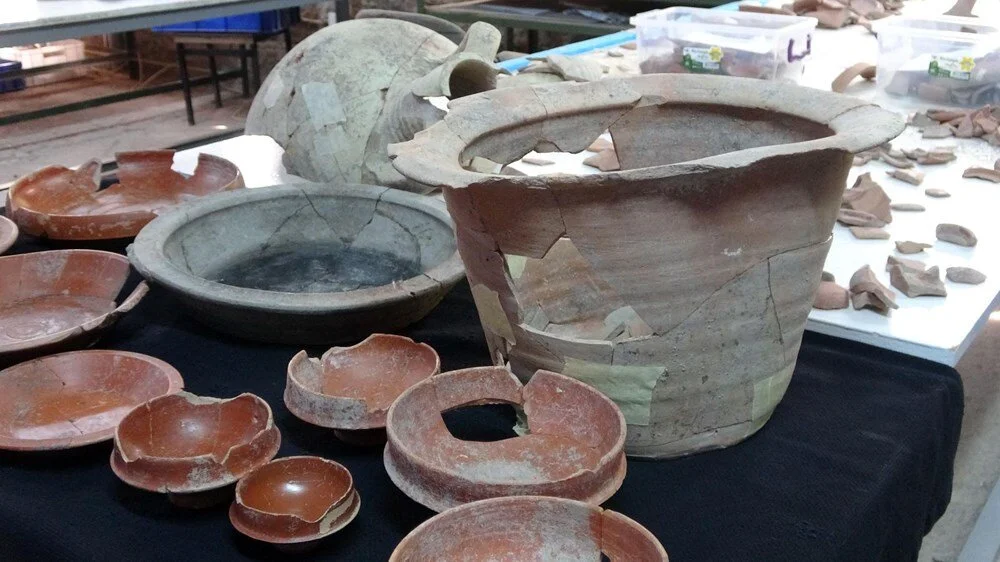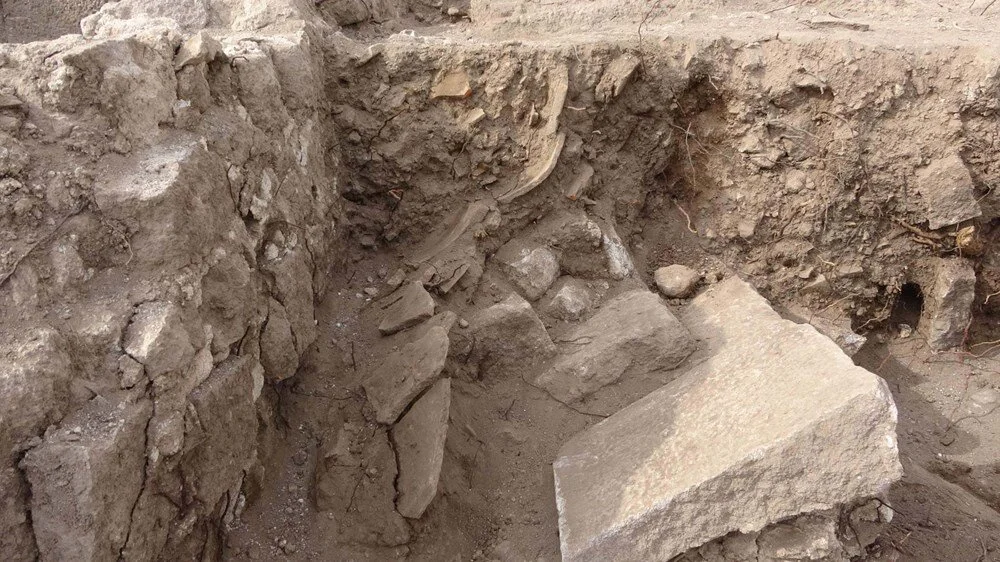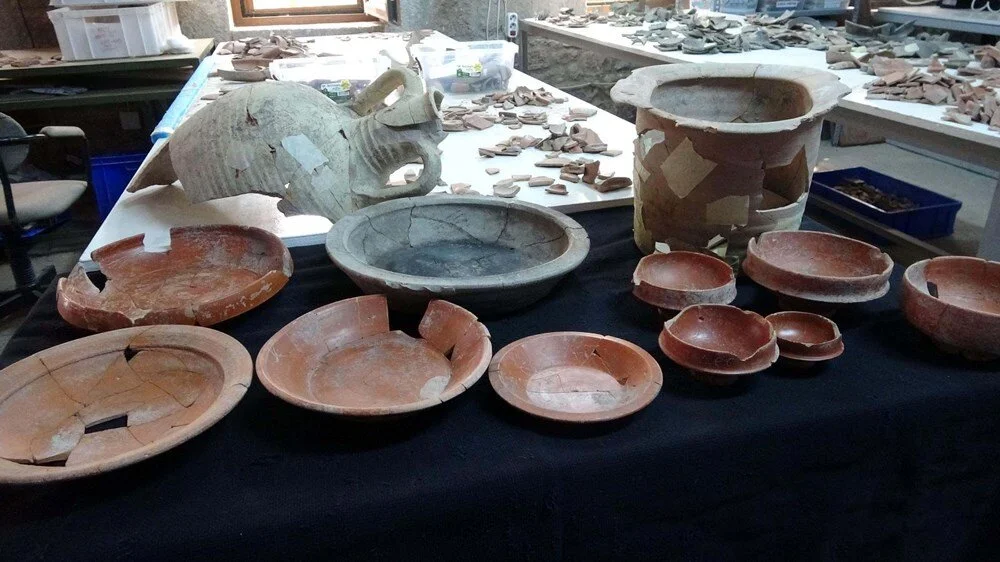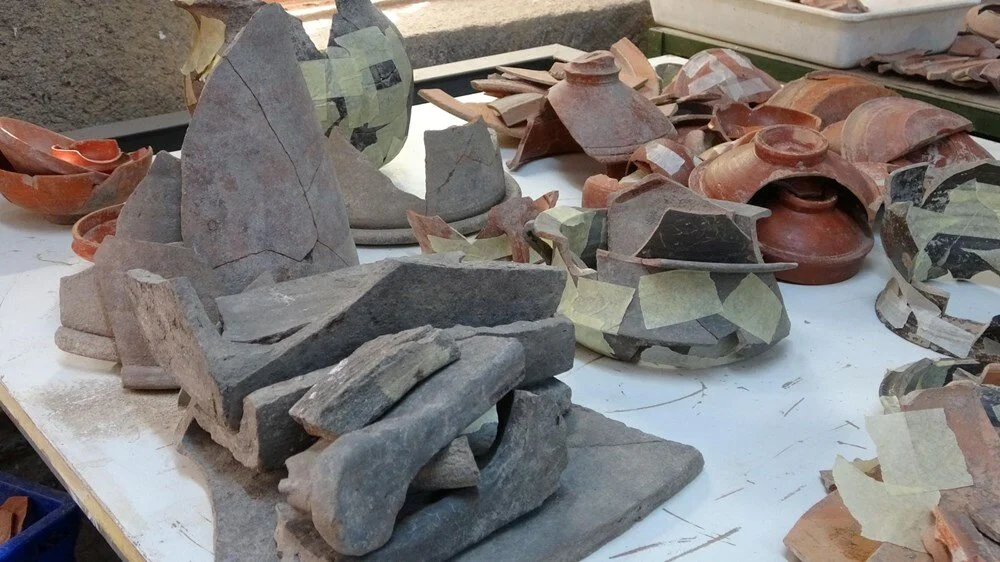
1800-year-old pottery found in Ancient City Assos
1800-year-old pottery has been found at the Ancient City Assos, located on the southern coast of the Troas region. The discovery is expected to provide insights into daily life.
Assos is located in the Ayvacık district of Çanakkale, at the western tip of Türkiye today.
Assos is mentioned in Homer’s “Iliad” epic and in the works of the Roman geographer Strabo.

Archaeological excavations are continuing this year at the fountain (Nymphaeum) structure to the east of the Bouleuterion (assembly building).
The excavations are being conducted under the leadership of Prof. Dr. Nurettin Arslan, a faculty member of Çanakkale Onsekiz Mart University’s Faculty of Arts and Sciences, Department of Archaeology, with a team consisting of a total of 30 individuals from both domestic and international sources.
In the ongoing excavations this year at the fountain structure to the east of the Bouleuterion, 1800-year-old pottery has been discovered, shedding light on daily life.

Dr. Mehmet Ayaz, the deputy excavation director, stated, “We currently define this as a fountain structure, and we are continuing excavation work in this area, which is concentrated to the east of the Bouleuterion. This fountain structure was used during the Roman period. We believe it has architectural significance because it is one of the rare buildings in Assos constructed from marble. We have excavated a specific section of it, and our excavation work is ongoing in this area. We have also come across a refuse area here. With the artifacts found, we have determined that it was actively used between the 2nd and 6th centuries AD.”
Dr. Ayaz said, “The complete recovery of everyday use pottery, especially in the refuse area, is of great importance to us. Therefore, we are able to examine the forms of pottery used in the daily lives of the residents of the city of Assos between the 2nd and 6th centuries AD in this refuse area.”

Dr. Ayaz continued, saying:
“We have managed to piece together a specific portion of the pottery recovered from here, and we are continuing the process of reconstruction. When the inventory is completed, we believe it will provide us with valuable information about Assos and the types of everyday use pottery during those centuries. In excavations, we come across numerous pottery items in both graves and living areas. The ones in graves are often intact or can be restored. However, the range of pottery in living areas is different. Generally, we find them in broken, small pieces and do not see them in their complete forms. On the other hand, those found in living areas are historically mixed. What we have unearthed from the refuse area at the Nymphaeum is very valuable in terms of recovering intact pottery from a specific time period (2nd to 6th centuries AD). It provides us with a unique range of pottery used by the residents of Assos during the 2nd to 6th centuries AD in their daily lives.”
You may also like
- A 1700-year-old statue of Pan unearthed during the excavations at Polyeuktos in İstanbul
- The granary was found in the ancient city of Sebaste, founded by the first Roman emperor Augustus
- Donalar Kale Kapı Rock Tomb or Donalar Rock Tomb
- Theater emerges as works continue in ancient city of Perinthos
- Urartian King Argishti’s bronze shield revealed the name of an unknown country
- The religious center of Lycia, the ancient city of Letoon
- Who were the Luwians?
- A new study brings a fresh perspective on the Anatolian origin of the Indo-European languages
- Perhaps the oldest thermal treatment center in the world, which has been in continuous use for 2000 years -Basilica Therma Roman Bath or King’s Daughter-
- The largest synagogue of the ancient world, located in the ancient city of Sardis, is being restored











Leave a Reply